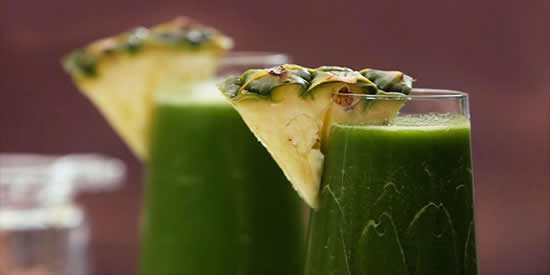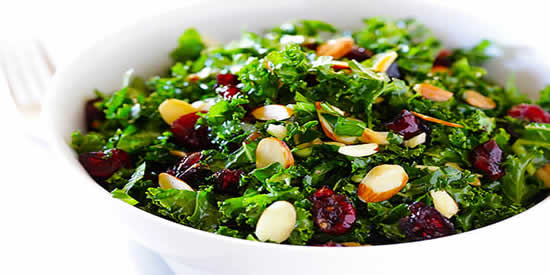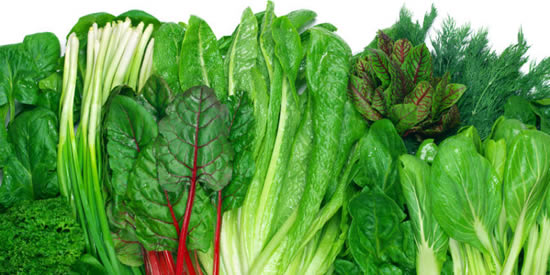Winter Greens
I love the spring. The lightness and bright colors of all the tender young vegetables and lettuces. Their mild flavor enticed me to try them all. I love the delicate sensation of flavors exploding in my mouth that come with spring flavor.
BUT, for fall and winter my heart is in soups. Comforting, warm, and soothing to the soul.
The winter vegetables and greens are those that we think of needing cooking rather than eating raw such as kale, collards, broccoli, rabe (sometimes called raab or rapini) and dandelion ( I think the exception to this is radicchio and arugula). What I have allowed myself to experience in the last few years (how sad I wasted so much time unwilling to experiment), excites me and my taste buds.
Don’t get me wrong, there is nothing better than roasted vegetables and the slight caramelization that occurs during the roasting process. The cold winter months tend naturally to lack the fresh vibrant colors on the plate that we see in the spring. The subtle colors of roasted root vegetables, stews, casserole and other comfort foods, including salads, have been given a new look.
As we focus on healthier options these days, the use of winter greens such as kale, collards , radicchio, and Swiss Chard are all taking center stage.

Winter greens, used in all courses of the meal, including cocktails, are part of a new age. This kale-infused concoction has fresh ginger for a spicy kick, while the pineapple adds a natural touch of sweetness.
It wasn’t too long ago that many of us - including me - turned their heads in the opposite direction when someone mentioned a new chip . . . kale chips. My thought was Yuck! How could such a tough rubbery leaf be a delicious chip? It just couldn’t!
These were crazy thoughts. I remember in the not too distant past, passing up the opportunity to taste this new creation.
Let’s look at salads first. That slightly rough texture, peppery, pungent flavor found in bitter greens of winter that naturally comes from a heartier plant which can survive those colder temperatures makes a noticeable robust seasonal dish.
I have discovered the autumn hues of ochre, magenta, and forest green; the colors of comfort. When we add the other nuggets common to fall and winter, we see dishes speckled with glistening seeds, nuts and citrus and stone fruits . . . transforming that dish into a centerpiece.
These bright colors will make you feel better when living in a season void of most young colors. Winter brings us a time for new ingredients to use - endives, kumquats, beets, jicama, and citrus.

Salad with Warm Cranberry Vinaigrette.
Winter greens are healthier. Remember that old rule of thumb; the darker and deeper the color, the more nutrient packed that food is. Because their flavor is more robust, think of these foods as palate cleaners; they are more filling which suits the season better. Several things to consider as you jump at the opportunity to place these heartier greens on your flights, it’s important to have a balance of flavors. Bitter radicchio, kale or chard salad should be matched with something salty or even acidic to reduce the bitterness. Prosciutto, crisp rendered bacon or pancetta with oranges, lemons, grapefruit - and then something sweet; perhaps a sweet squash, dried cranberries, pomegranate seeds or figs, pecans, almonds, or toasted walnuts for a bit of crunch and a nutty flavor to play off the saltiness and sweetness. Finally, finish with a sweet-sharp balsamic vinaigrette.
Many of these greens belong to the cabbage family dating back centuries. Also in this horticultural group you find Brussels sprouts and broccoli. Chard, a relative of the beet, is a mellow, earthy green that peaks from June through October in the States. Unlike Kale, whose stems are very tough and rubbery, chard leaves and stems (which are often vibrantly colored) are edible.
A trivia tidbit: To prep kale, you first have to remove the leafy greens from the tough stems. But instead of cutting them, simply "zip" them off. Hold a leaf by the thickest part of the stem with one hand while you gently pull it up and pinch it with your index finger and thumb of your other hand. If you think about how winter greens compare to spinach, all these greens will wilt like spinach when cooked but won't lose nearly as much volume.
They stay plumper and add more volume to the plate, so you need less.

You can't substitute all bitter greens for each other - kale and collards have tough leaves and thick stems compared to leafier dandelions - but some methods, like blanching or chopped salads, work for all of them. Chard makes the perfect filling for phyllo dough pies like spanakopita and it pairs beautifully with pine nuts, artichokes, or lentils. The stems, a vibrant rainbow of reds, pinks, whites, and yellows, are hard and fibrous, but become tender and delicious when grilled, pickled steamed or baked into a chip.. Its shiny leaves are at home chopped raw in a salad, but can also hold up against long simmerings and braising without falling apart or dissolving into mush. They're wonderful in a soup or simply sautéed, but my favorite way to serve this green is to combine softened chard with onions, mushrooms, sweet corn, and chilies in adobo. The result: hearty, smoky, vegetarian Swiss chard tacos that are hard to stop eating. Who would have thought I would ever try one? And be surprised!
Another short trivia tidbit: Steaming kale is the best way to unlock its cholesterol-lowering properties. To make a long story short, the chemical makeup of steamed kale allows your body to better excrete bile acids, which in turn lowers your cholesterol. So those of you with high cholesterol, eat more kale.
If you choose to indulge in winter greens in ways other than salad, the perfect choice is for stews. Most of the winter greens, especially collards and kale require longer cooking and can be added to the beginning of a stew rather than the more delicate greens which should be added just before serving so they don’t disappear into the stew in a grey green mush.
Tastefully Yours makes a dandelion green pesto with almonds and Pecorino. The bitterness of the greens are offset by lemon zest and juice, and it's really nice for pasta, bringing the freshness of summer into the hearty fall meals. And right now we do an olive oil flatbread: it's flour, water, olive oil and white wine, and no yeast, and you can't over- or under-work it, so it's kind of the perfect dough. We roll it out and fill it with braised greens, and bake.
A touch of kosher salt adds the final kiss of flavor for the aircraft. This is a great snack or lunch with addition of a protein of anything from seafood, chicken to tofu.

And here's my favorite. We also make chips out of bitter greens such as kale. We make a purée of roasted peppers, carrots, onions, and whatever greens we want to put in ( we add spinach to soften the bitterness slightly), then bind it with a little raw cashew purée made from cashews soaked in hot water. We spread the mix thinly onto baking sheets and cook them in a low, low oven (as low as it'll go) until they're crisp like chips. Set the oven like you would for a meringue, start the pan in an oven set at 200, close the door and turn off and let sit overnight. If not crispy when you come in the next day, crisp up at 200 F. Then the best part - we drizzle larger ones with oil, salt, and pepper and throw them on the grill for salads with other flavors like artichoke, olives, and cauliflower. Yum!
Experiment! Don’t turn your nose up and say 'yuk' as I did . . . you'll miss some of winters best bounty and be a bit healthier in the meantime.

About Paula Kraft . . .
Paula Kraft is the founding partner of the DaVinci Inflight Training Institute located in Fort Lauderdale, Florida and the founder/president of Tastefully Yours Catering, an aviation specific caterer, located in Atlanta, Georgia for over 35 years.
Paula is active with many aviation and catering-related groups including the International Caterers Association, the International Inflight Food Service Association and is a board member of Women in Corporate Aviation. She is the past chair of the NBAA Flight Attendant Committee Caterer’s Working Group for 15 years perfecting unique catering training sessions for NBAA conferences and events. Currently, she serves on the NBAA Flight Attendant Advisory Committee and is a member of the Training and Safety Subcommittee. Paula was a founding member of the Steering committee for the creation of a European Flight Attendant Committee and conference and serves as a subject matter expert to the board of International Standard for Business Aircraft Handlers (IS-BAH).
After founding Tastefully Yours Catering, she has been offering culinary and food safety related training to the general aviation community. With a strong dedication to improving catering safety, risk mitigation and safe food handling, she developed and introduced the concept of “catering safety management systems”. As a certified food safety instructor, Paula offers catering SMS and culinary classes for all aviation professionals.
Paula’s first-hand experience, business acumen, research, and relationships make her an industry expert - one which allows her to share information that will help raise the professional training level for flight attendants today that will reduce the risk of food-related concerns tomorrow.
From Paula . . .
I have coordinated training programs and clinics for NBAA and EBAA conference attendees for over 10 years, created mentoring programs for caterers and flight attendants to broaden their aviation culinary skills, and to assist them in adapting to the unique challenges and constraints found in catering for general aviation. I recognize the need for training and have worked closely with flight departments, flight crews, schedulers and customer service reps at the FBOs to ensure that catering specific training provides information and skills necessary to reduce risk while assisting them in their job duties that include safe food handling, catering security, accurate transmission of food orders, and safe food production, packaging and delivery.
I fell into aviation catering quite by accident. I was the in-house caterer and bakery supplier for Macy’s department stores in Atlanta when catering was ordered for a Macy’s customer which was soon to change my life. After the client enjoyed the catering provided, I was summoned to the client’s corporate office to provide several of the items delivered through Macy’s to the executive dining room. Within a week, I was providing food for the flight department and my first order was for the President of a foreign country (as I was too be told soon after).
So, here I am, some 35 years later, still loving every minute of every day in aviation catering.
BlueSky Business Aviation News | 12th December 2019 | Issue #537
© BlueSky Business Aviation News Ltd 2008-2019


